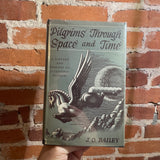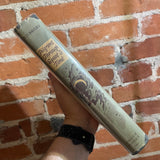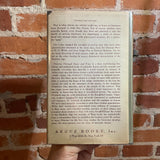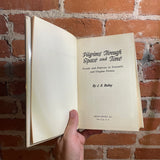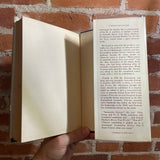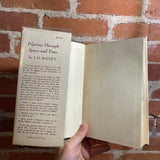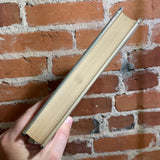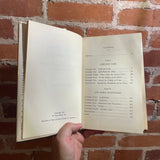Condition: Acceptable. Please see the images for more details. May show signs of wear such as:
• Shelf wear or scuffing on the cover
• Creases, marks, or tears on pages or dust jacket
• Possible remainder marks or previous owner’s name/notes inside
Trends and Patterns in Scientific and Utopian Fiction
Cover art:
Blurb: “The first version of Pilgrims Through Space and Time was a dissertation for the Ph. D. degree at the University of North Carolina.
The story of this book begins in 1926.
The author was beginning graduate work in English under the guidance of Professor Howard Mumford Jones. When Mr.
Bailey went to talk over what problem he might investigate for writing a Master's essay, Professor Jones asked: "What have you read that stimulated you? I don't mean just in your college courses, but all the time you were growing up - what has provoked you to think p"
"Well, a good many things. Among them," ran the somewhat uncertain reply,
"some of the things all boys read, pulp magazines, Jules Verne, and H. G. Wells."
"Wells's The First Men in the Moon is a great book."
"How would a Master's essay do on
Wells-Wells's scientific romances P"
From this question grew an essay entitled The Scientific Novels of H. G.
Wells, accepted for the M. A. degree in 1927. In the following year, Mr. Bailey convinced the faculty that a continuntion of his M. A. problem, to include a study of scientific fiction from Mary Shelley's Frankenstein through Wells's The World Set Free, would make a good doctoral study.
He found at once that the problem was really two, the problem of what the books are, for no bibliography existed, and then the problem of their history, contents, and patterns. Among the many people to whom he wrote to inquire "What pieces of scientific fiction have you read?" was Mr. Ben Abramson of the Argus Book Shop, who had been collecting titles of scientific romances for some time. When he generously gave his titles, Mr. Abram-son asked to see the completed manuscript with a view to publishing it.
Finally in 1934 the dissertation was done and was accepted: Scientific Fiction in English, 1817-1914: A Study of Trends and Forms. Mr. Abramson thought the study should be published if a chapter might be added to give a cross-sectional view of scientific fiction from 1914 to the present. From the several thousand pieces of scientific fiction uncovered in the bibliographical research, Pilgrims presents some hundreds that define the field from the beginnings to the 1940's and illustrate the conclusions drawn in the study.
"Scientific fiction? Ah, yes! Jules Verne and H. G. Wells, cataclysm and wonderful machines, and ... and Aldous Huxley's Brave New World." "That allP"
"There's something I picked up in a newsstand, Astounding Stories. Yes, I think I know what you mean.
That is what almost any scholar might say, at home in literature from Beowulf to John Dos Passos. For of course scholars read scientific fiction, even though they have not admitted it into the family of serious literature. It's illegitimate, a child of science lured into strange union with starry-eyed romance. It's a gamin: it's "pulp."
Yet it has engaged the energies of serious men who were often scientists and dreamers at the same time, from Sir Thomas More to H. G. Wells, and from Edgar Poe to Edward Bellamy. On the one hand dreaming of what science might do, they foretold utopia, but on the other fearing its power, thundered denunciation of the Machine Age.
Pilgrims Through Space and Time is a first, trail-blazing historical and analytical study of scientific fiction and the utopian and scientific romances that describe a world remade by science. It makes clear that this fiction forms a solid tradition, book upon book many pieces, like Gulliver's Travels, famous as isolated novels.
Showing that these peaks belong to a range of many hills and foot-hills, it analyzes the shape of the range: similarities in the way the stories are told, in the substance of the stories, in the imaginary inventions they describe, and in the creeds of the authors. That the range exists and how it is shaped is most important to the scholar in Academia, for here is unexplored terrain. The analysis of creeds may be most stimulating to the thoughtful reader. Vigor-ous, original, imaginative men seriously concerned to understand and interpret the meaning of science and the machine in human life have used scientific romances to state their boldest speculations.
While their stories have entertained some millions of youngsters in their teens, and a smaller number, perhaps, of their elders, and prepared these readers to face with some thoughtfulness the world of the Machine Age, the message of these books has undoubtedly been a tremendous force in moulding the modern mind. In outline, at least, Pilgrims for the first time studies the historical develop-ment, the story-pattern, and the ideas of scientific fiction.“









